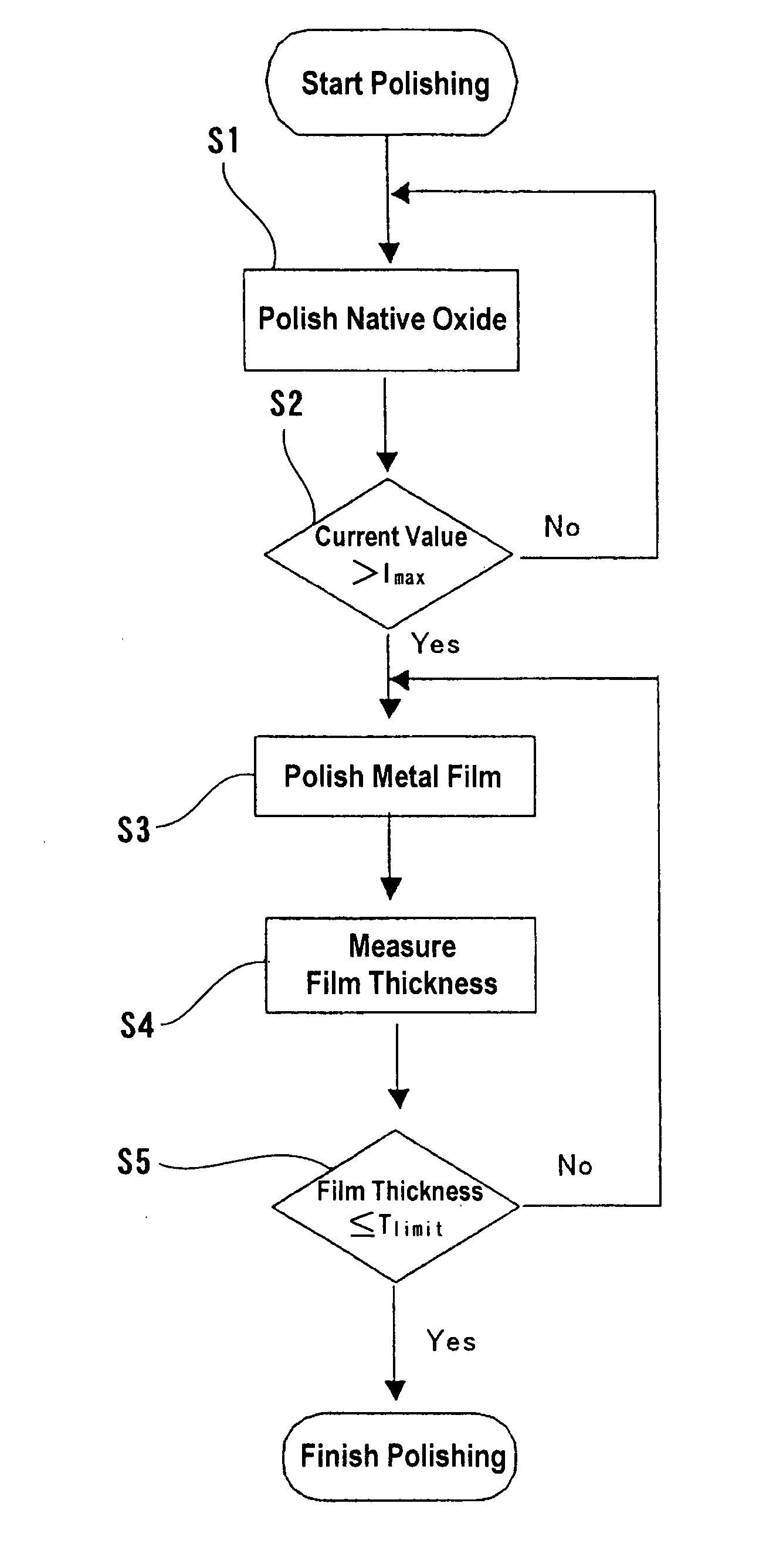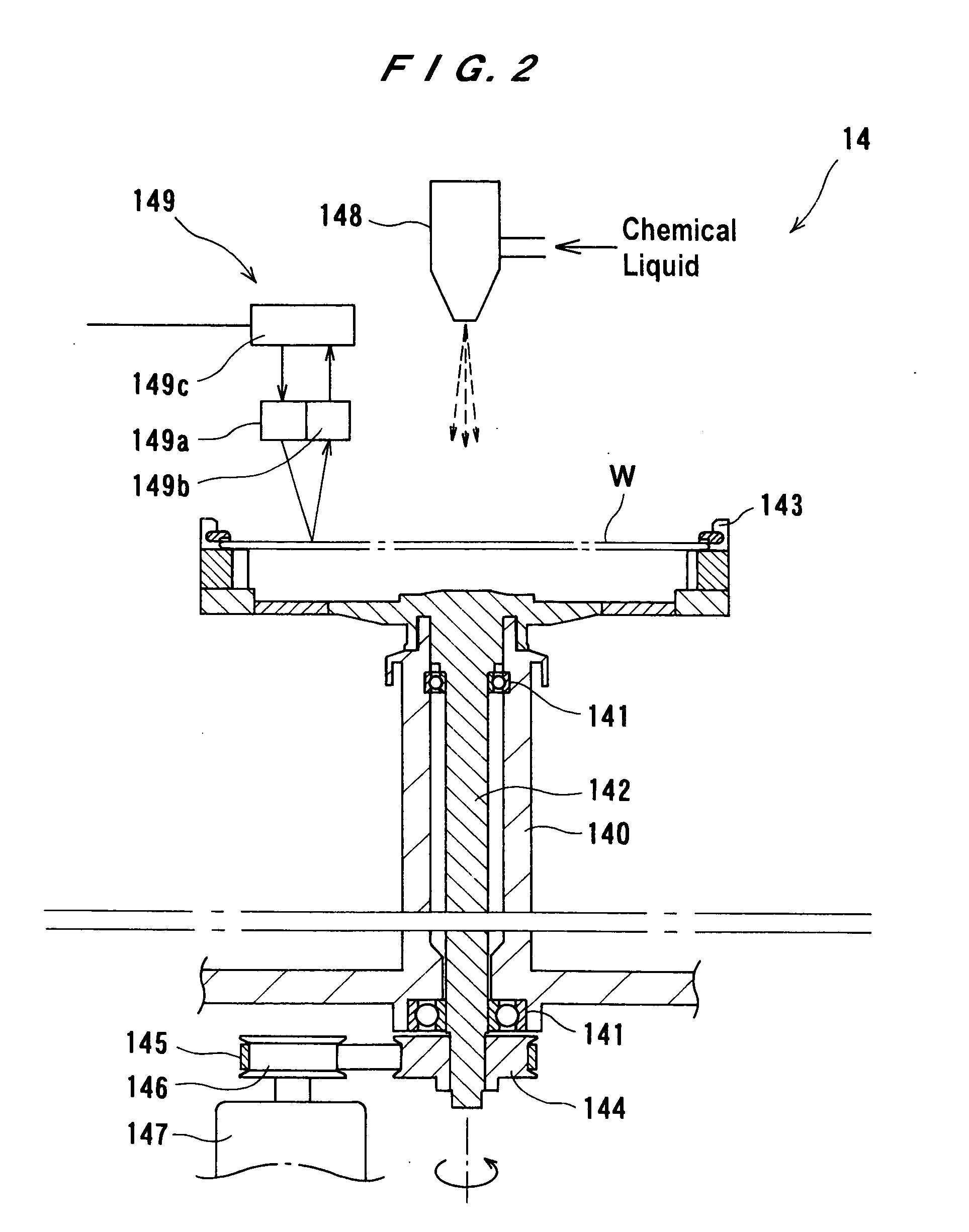Substrate processing method and apparatus
a processing method and substrate technology, applied in the direction of manufacturing tools, grinding machine components, lapping machines, etc., can solve the problems of insufficient polishing of substrate local areas, inability and difficulty in polishing native oxides. to achieve uniform planarization
- Summary
- Abstract
- Description
- Claims
- Application Information
AI Technical Summary
Benefits of technology
Problems solved by technology
Method used
Image
Examples
first embodiment
[0042]FIG. 1 is a plan view showing a polishing apparatus as a substrate processing apparatus according to the present invention. As shown in FIG. 1, the polishing apparatus has four loading / unloading stages 2 on which wafer cassettes 1 are placed. Each of the wafer cassettes 1 stocks a large number of semiconductor wafers therein. The polishing apparatus includes a moving mechanism 3 arranged along an array of the loading / unloading stages 2. The moving mechanism 3 includes a first transfer robot 4 having two hands. Further, the polishing apparatus has a film thickness measurement unit 100 adjacent to the moving mechanism 3. The first transfer robot 4 is accessible to each of the wafer cassettes 1 placed on the loading / unloading stages 2 and to the film thickness measurement unit 100.
[0043] The polishing apparatus also includes two cleaning and drying devices 5 and 6 disposed at an opposite side of the moving mechanism 3 to the wafer cassettes 1. The hands of the first transfer robo...
second embodiment
[0067]FIG. 4 is a plan view showing a polishing apparatus as a substrate processing apparatus according to the present invention. As shown in FIG. 4, the polishing apparatus has a loading / unloading stage 2 on which wafer cassettes 1 are placed, a first transfer robot 201 having a hand accessible to the wafer cassettes 1, wafer stages 202 and 203 provided on both sides of the first transfer robot 201, and a vacuum chamber 204 arranged along an array of the first transfer robot 201 and the wafer stages 202 and 203.
[0068] The vacuum chamber 204 houses a dry process unit 206, a second transfer robot 205 having a hand accessible to the wafer stage 202, and a third transfer robot 207 having a hand accessible to the wafer stage 203. In the present embodiment, the dry process unit 206 comprises a dry etching unit for reducing or etching a native oxide of a metal film formed on a surface of a wafer. The vacuum chamber 204 includes a shutter 208 disposed between the second transfer robot 205 ...
PUM
 Login to View More
Login to View More Abstract
Description
Claims
Application Information
 Login to View More
Login to View More - R&D
- Intellectual Property
- Life Sciences
- Materials
- Tech Scout
- Unparalleled Data Quality
- Higher Quality Content
- 60% Fewer Hallucinations
Browse by: Latest US Patents, China's latest patents, Technical Efficacy Thesaurus, Application Domain, Technology Topic, Popular Technical Reports.
© 2025 PatSnap. All rights reserved.Legal|Privacy policy|Modern Slavery Act Transparency Statement|Sitemap|About US| Contact US: help@patsnap.com



